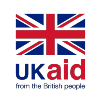‘So, what will you do in your new job, Mummy?’ – asked my 6-year old son as I started my new role with the Child Labour Action Research Innovation in South and Southern Asia Consortium (CLARISSA) in January.
“I will work with children, you know…’, I tried to explain to him, ‘there are many children in Bangladesh, and also around the world, who need to work. Some of them go to school, some don’t. I will work with some of these children who work. I will also work with their parents. I will try to understand why they work. I will hear about their feelings. We will work together to find ways to make children safer and happier”.
‘So that no child has to work?’ – asked my son.
‘I don’t know – I don’t think I have any answer to this’.
I am not sure whether he was convinced with my response or not, I found him getting busy with his toys.
Should children have to work?
Whether children should work or not has been much debated in academia and in practice. Categorising children’s work as ‘good/safe’ or ‘bad/harmful’ and labelling certain types of work as permitted and others as prohibited rarely works in practice, not least because beliefs about what is safe and harmful are not dichotomous and meanings deviate across contexts. It is argued that children’s work can be both harmful and/or beneficial depending on the context.
In the absence of any structured social protection system, and in the context of systemic inequalities and poverty, children in Bangladesh often must start work at an early stage of their life. Around 1.2 million children in Bangladesh are engaged in worst forms of child labour (WFCL). Many of these children work in the production of leather goods.
The leather industry in Bangladesh
In Bangladesh, we will work with children and communities who are involved in work related to leather industry in Hazaribag, which is considered as one of the top ten toxic places in the world. Within the context of environmental hazards in tanneries, children are often exposed to dangerous chemicals, toxic substances, and equipment, and work long hours even often under the sun or in poorly ventilated space.
Children often experience abuse and exploitation both at home and at workplaces. Many children often are unable to combine education and work and many drop-out from school as they must continue work to contribute towards their family’s income.
Bringing together research and practice
From my previous experience as a child protection practitioner and my recent experience of doing research with children (pdf), I have learned that children’s relationships with everyday violence and agency are more complex and nuanced than what often I was able to capture as a practitioner. It is crucial to be fully engaged with, and holistically informed about, the historical, political, economic, and socio-cultural contexts that perpetuate violence in diverse contexts.
I am thrilled to be part of CLARISSA which gives me the opportunity to combine research with practice. CLARISSA is designed in a way which aims to generate innovation from the ground to address some of the WFCL. The large-scale action research processes in CLARISSA shall inform us about the generation of interventions and activities which shall be more grounded and contextualised solutions to improve the wellbeing of children involved in worst forms of child labour in Bangladesh.
March 4, 2020
